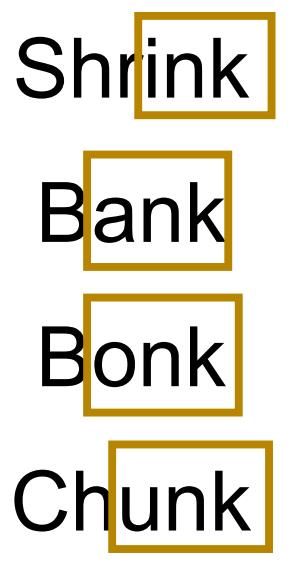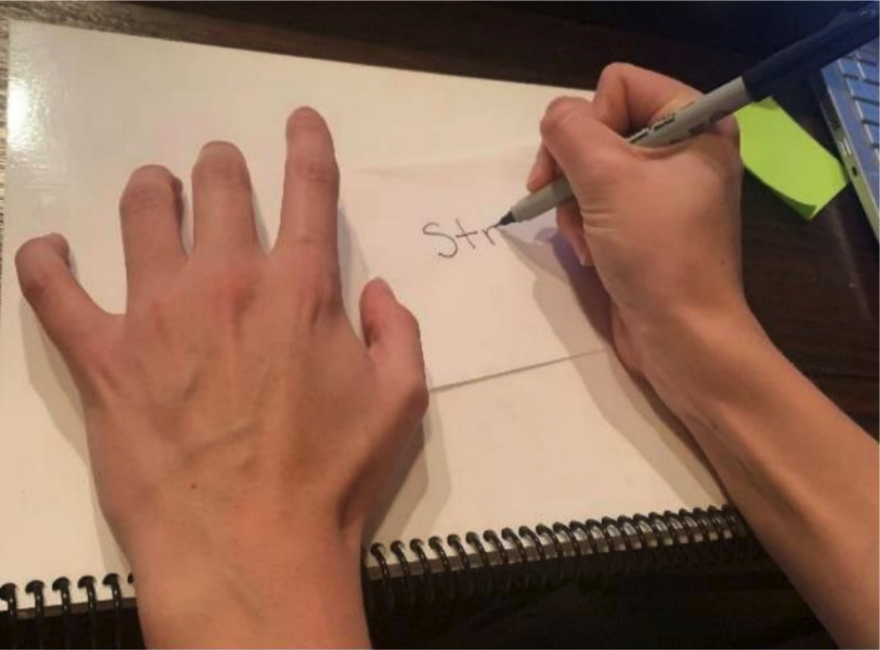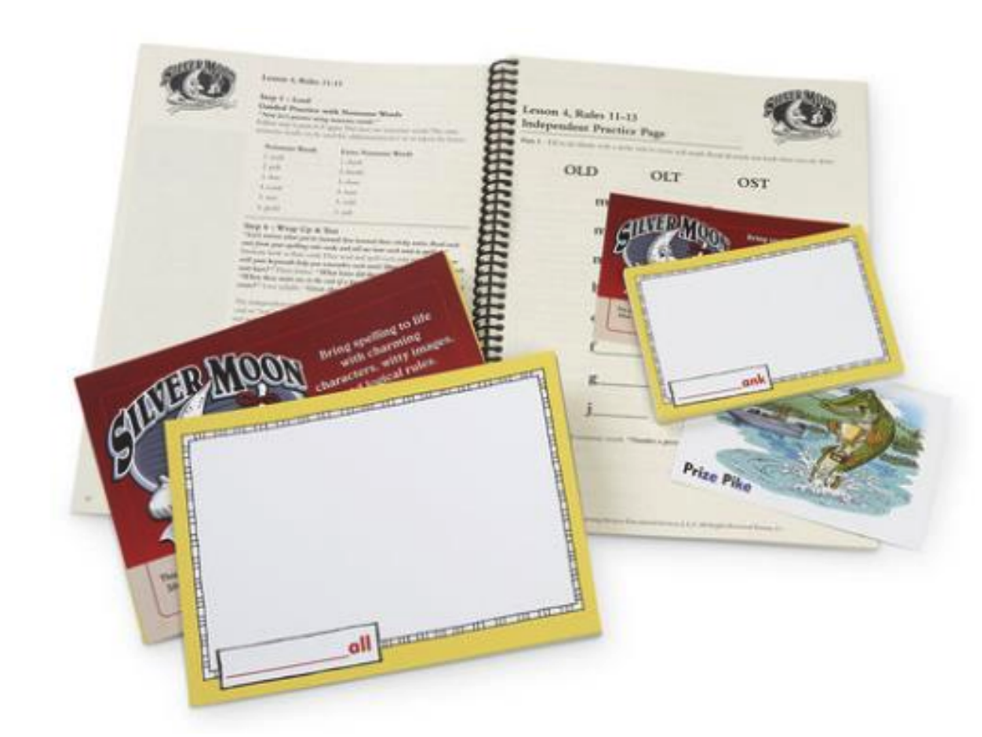Hello! We are back with another discussion about sticky units of sound. This is the second blog in our sticky units series, and I thINK you will enjoy what I have to offer you. If you’ve already read my previous posting, I’d like to thANK you for taking the time to navigate that chUNK of learning. If you have yet to check out my first blog in this series, please pause and click on this link. My previous blog will tell you everything you need to know about sticky units of sound.

Now, if you’ve been playing along, you might have noticed some emphasized letters in the last paragraph. It’s no mystery that I’ll be covering our next set of sticky units, so I used words that demonstrated some of our new units in action. Cheesy as it may be, identifying sticky units of sound in their “natural habitat,” that is, within a reading passage, is not only fun to do with educators, but it’s also a great strategy to use with students. In fact, it’s the best way to get students excited about searching out targeted
spelling patterns within everyday contexts, and isn’t that what generalization of knowledge is all about? If you like this sort of activity, I have good news for you! I will be including a similar activity in my FREE set of downloadable reproducibles, found at the end of this blog.
Because sticky units of sound do, indeed, make unexpected sounds, the best approach to helping our students learn them is by providing them with explicit instruction. In
today’s blog, I’ll give you all of the information you need to explicitly teach this family of units, as well as some resources to help your students practice them.
Before You Begin
Before teaching these concepts to your student, make sure they can...
Overview of Units
Today, I introduce you to the -NK family of units. You may recall that sticky units of sound are a combination of letters that:
For the full introduction on sticky units of sound, visit my previous blog post.
Meet the NK Family
Last time, you learned about our first family of units: the NG family. Below, you will meet the NK family. You may be wondering what I mean by “family.” Well, just as folks often point out how much I look like my sisters, each member of the NK family of units also has similar traits. Let’s see if you notice what they have in common. Here they are:
You probably noticed that these new units also have a common theme: they all end with ‘N-K.’ I typically task my students to also discover this connection in a similar way. After that, we begin to form words with our new units by adding a letter in front of each unit. Although it’s helpful to use the same letter to form each word, it’s not always possible. With this family of units, we will try our best to form familiar words even though we can’t use the same letter each time. Let’s give it a try!
Next, I will say each unit out loud in isolation and then ask my student to repeat each isolated unit sound after me. Together, we will look at a list of words containing these units and place a box around the unit in each word like this:

At this point, it’s important to review with our students that each unit is considered just one sound, typically found at the end of a word or syllable but never at the beginning. It’s helpful to practice this concept by asking our students to tap out each word on their fingers while saying the sounds out loud.

This strategy can be used while reading and while spelling. For step-by-step instructions of these multisensory strategies, see my previous blog post, and check out our website to purchase our instructor manual, complete with more information on sticky units of sound, as well as word lists for additional practice.
Time to Doodle
Once they are comfortable with reading and spelling these new units, it’s important that your student create a resource to refer to each time they get a new set of units. You see, although we teach units of sound explicitly, the list of units tends to add up, and they can be easily forgotten.
This is where the Silver Moon “keyword” comes into play. Now, to put you in the shoes of a student who is accumulating a long list of new units, I want you to think about the last time you had a list of items to get from the grocery store. What are you likely going to do? You’re going to write down that list! Naturally, we all go into these situations with good intentions, making that organized list of needed items, and then, inevitably, you forget that list at home. Of course, you don’t discover this error until you walk through the doors of the grocery store and reach into your pockets only to find old gum wrappers and a piece of lint. Insert facepalm here.
 Photo byTorbjorn Helgesen on Unsplash
Photo byTorbjorn Helgesen on Unsplash
As you scan the aisles of the store, you attempt to remember what was on that list. Then, you begin to create contexts for remembering what we needed. “Hmm...I remember that I had no milk for my cereal this morning, so I definitely need milk.” “Oh! And I know I need eggs for those cookies I need to make for the potluck.” Before you know it, you have placed almost all the necessary items in your basket thanks to the mental contexts you’d created that served as memory triggers for your list of groceries.
Just as we would find it challenging to remember a whole grocery list without any context to trigger our memories, our students may also struggle to remember every unit
they learn without memory triggers for each targeted sound.
Therefore, I ask my students to create a keyword to correspond with each new unit. Then, they create a visual to correspond with each keyword on their Doodle-a-Rule
cards, a fantastic set of resources that can be found in our second set of Silver Moon Spelling Rules. Students can use Doodle-a-Rule cards as flashcards to practice their
unit sounds so they don’t find themselves lost among the aisles.
 Silver Moon Spelling Rules Set 2: Doodle-a-Rule Cards
Silver Moon Spelling Rules Set 2: Doodle-a-Rule Cards
Important Tips to Consider
And on to the Free Stuff!
And that’s it—easy as pie! We’ve officially covered our second set of sticky units of sound. As a ‘thank you’ for following along, I am providing you with some free, yes
FREE, reproducibles to practice these concepts with your students. Simply click the link below and download!
Sticky Units of Sound Ending with -NK Reproducibles
As always, if you found this blog helpful, please share it with your fellow teachers, parents, and interventionists. Interested in learning more? Check out more of our blogs HERE, and don’t forget to check out our complete guide to spelling at www.Silvermoonspellingrules.com
Happy Teaching!
Written by:
Kate Wagner, BSE
Reading Interventionist, Remote Learning Coach